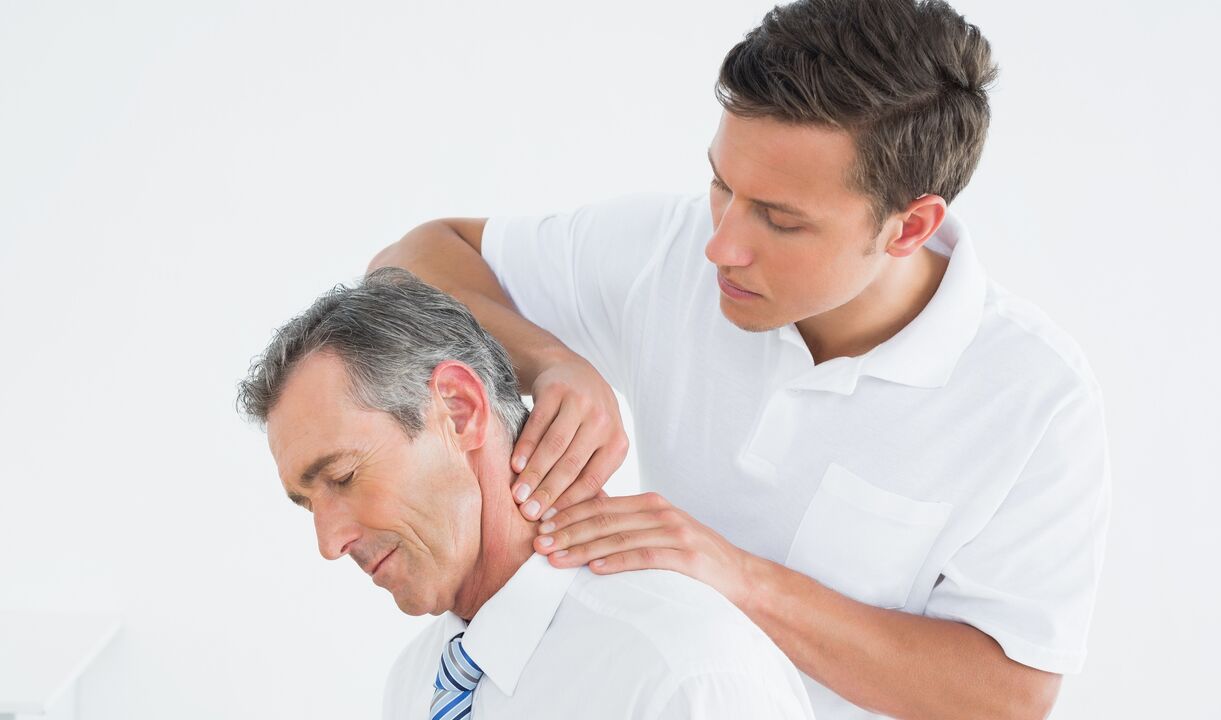Back and neck injuries, a lot of movement, sedentary, pregnancy, old age - all these causes are the cause of diseases of the spine, supporting the human body. Symptoms of osteonecrosis, cervical, thoracic or lumbar, are variable, so any sign, no matter how subtle, cannot be ignored. The sooner treatment is started, the sooner the recovery will be. If you notice the first symptoms of the disease in yourself, consult your doctor and get examined.
What is osteonecrosis?
One of the most commonly diagnosed diseases of the spine is osteonecrosis, which is found in every 3rd person after 35 years. It mainly affects older adults who are overweight, former athletes or workers whose professional activities involve heavy lifting. According to statistics of recent years, it is clear that the disease is getting younger and younger. Girls and boys who enjoy sedentary lifestyles no longer surprise doctors with complaints of back pain.
Osteoma is a pathology of the spine, in which there is a degenerative-dystrophic lesion of the intervertebral discs. If left untreated, the process of destruction of the vertebrae begins to lead to disability, atrophy and quadriplegia. Such a problem can also lead to spinal cord stroke, sciatica, torticollis, bulging eyes. At the first signs of the disease, you need to seek medical help.
Each degree of this spinal dystrophy is characterized by its own symptoms and signs. There are four stages in total. In the early stages, pathological changes occur, which are manifested by dehydration and a decrease in the height of the discs. On the second day, the relaxation of the muscles and ligaments in the vertebrae was fixed, and spondylolisthesis was diagnosed (displacement, curvature of the disc). The third stage is characterized by the appearance of prolapse and protrusion of the disc. In the final stage, deformation of the vertebrae occurs, on which vertebrae - osteoblasts grow.
Symptom
The signs and symptoms of osteonecrosis depend on the stage of the disease. The type of disease also plays an important role. Osteoma affects different parts of the spine: cervical, thoracic, lumbar. Some of the patient's symptoms may not be related to the spine such as heart or headache, numbness in fingers and toes. The patient also complains of neck pain or pins and needles in the chest. It is very important to seek help from the hospital. Treatment for the disease lasts about 3 months, plus a year for rehabilitation.
The most common symptoms of osteonecrosis:
- back pain between the shoulder blades;
- dizzy;
- feeling of a lump in the throat;
- nausea;
- loss of sensation in the extremities;
- rising temperatures;
- limb numbness.

Cervical bone necrosis
If we consider the signs according to the type of disease, problems with the cervical vertebrae are very dangerous because of their proximity to the brain. Here there is a partial overlap of the blood vessels that carry blood to the head. Symptoms of cervical osteochondrosis are:
- dizzy;
- clots in the eyes;
- noise in the ears;
- "drift" when walking;
- pain in the back of the head, arms, shoulders.
Thoracic bone tumor
This type of disease affects the heart, as a result of which the patient begins to complain of symptoms such as:
- pain in the chest, back, shoulders;
- broken heart;
- angina;
- feeling of a lump in the throat;
- intermittent shortness of breath;
- shortness of breath;
- numbness of hands and feet.
Lumbar bone tumor
A disease affecting the lower spine leads to problems with the pelvic organs. Affected sexual function. Signs of lumbar osteonecrosis are:
- pain in the tailbone, sacrum, lower back;
- muscle spasms of thighs, calves, buttocks;
- shot in the foot;
- numbness of limbs;
- poor joint mobility;
- exacerbation of diseases of the genitourinary system.

Symptoms of vagrant osteonecrosis
This concept means osteonecrosis disease, which develops in two parts of the spine, for example, tarsal osteopathy of the disease. In this case, the patient will feel signs of pain appearing first in one place of the back, then in another, ie. the location of the pain will move. In this case, the patient can diagnose a violation of the cardiovascular system and even take drugs to treat this problem, which cannot be done without a physical examination.
Signs of bone necrosis
Depending on what the disease affects, doctors distinguish four groups of syndromes, each of which is characterized by its own symptoms. The syndromes of osteonecrosis are as follows:
- static syndrome. This concept refers to the change in the shape of the spine. There is a violation of posture: a person begins to stoop, stooping, lowering one shoulder below the other. Scoliosis occurs.
- neurological syndrome. The disease affects the nervous system. People screaming, numb. Neurological symptoms develop into complications in the form of paralysis or convulsions.
- vascular syndrome. Here we are talking about squeezing the vessels by vertebral processes. This condition is often observed in the cervical form of the disease. The result is a violation of blood circulation, which starves the brain of oxygen, which leads to clumping, dizziness, nausea, loss of hearing and vision. With osteonecrosis of the thoracic or lumbar spine, chronic ischemia of internal organs is observed.
- nutritional syndrome. It is characterized by insufficient nutrition of the tissues with the necessary substances. As a result, ulcers, inflammation and other defects appear on the skin.

The first signs of osteonecrosis
In the early stages of the disease as well as in the final stages, the patient does not feel any discomfort. Only a doctor can identify a problem at this stage of development, such as when diagnosing another illness or during a physical exam. The diagnostic methods are as follows:
- X-ray of the spine in two projections, if necessary, X-ray of one vertebra;
- magnetic resonance imaging (identifying disc herniation, assessing the condition of the spinal cord);
- discography (checking the disc);
- electromyography (determining the extent of nerve damage).

























